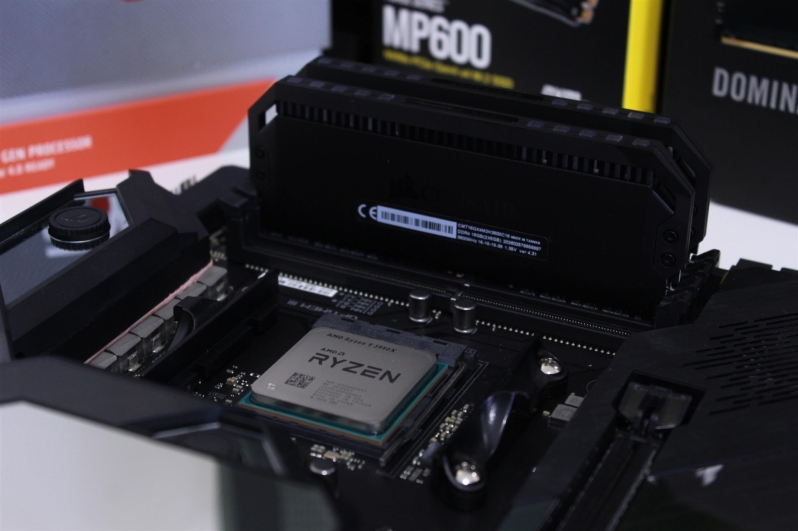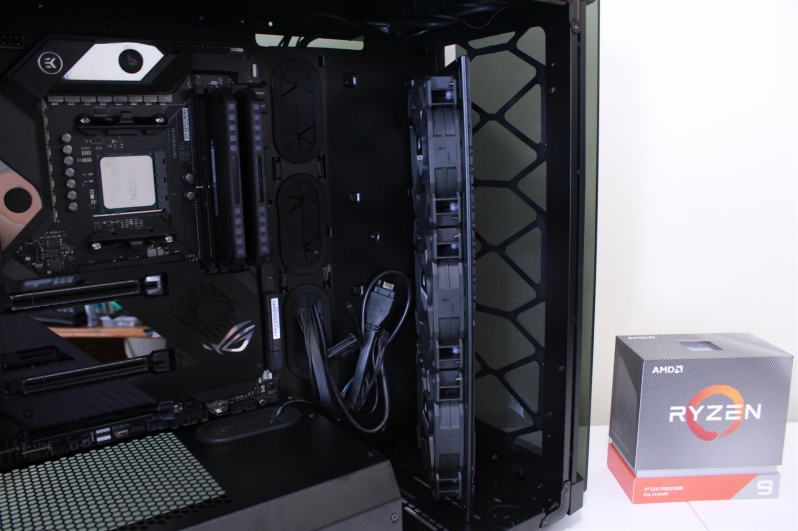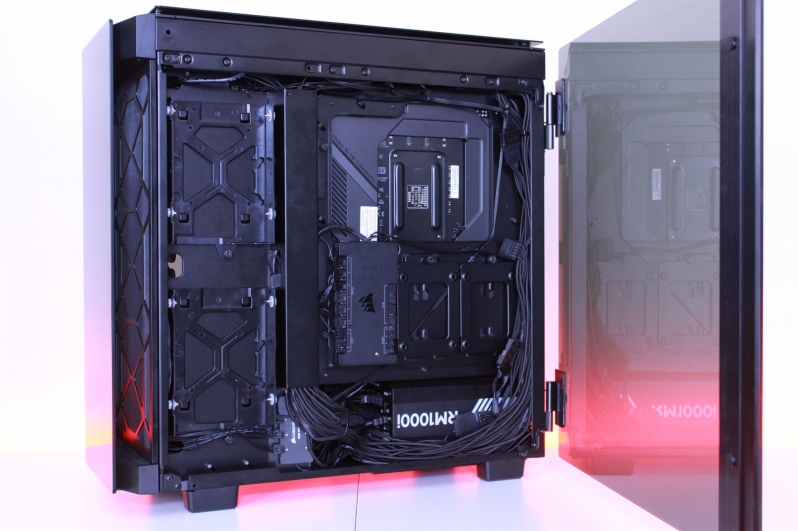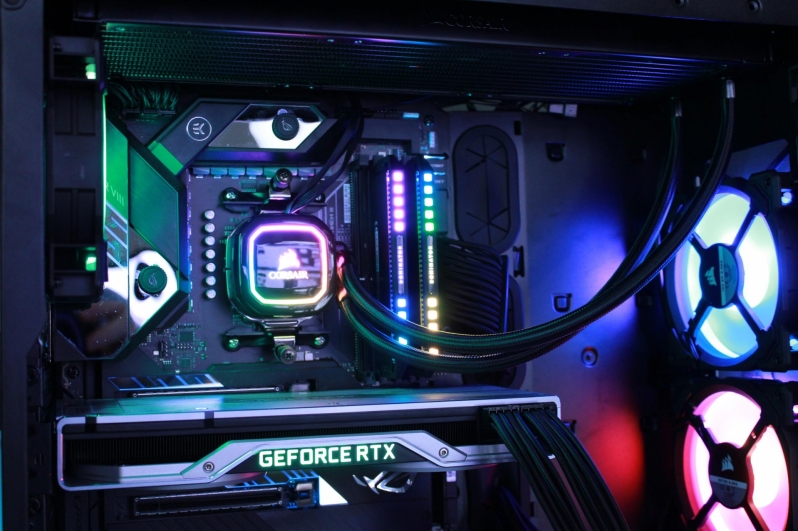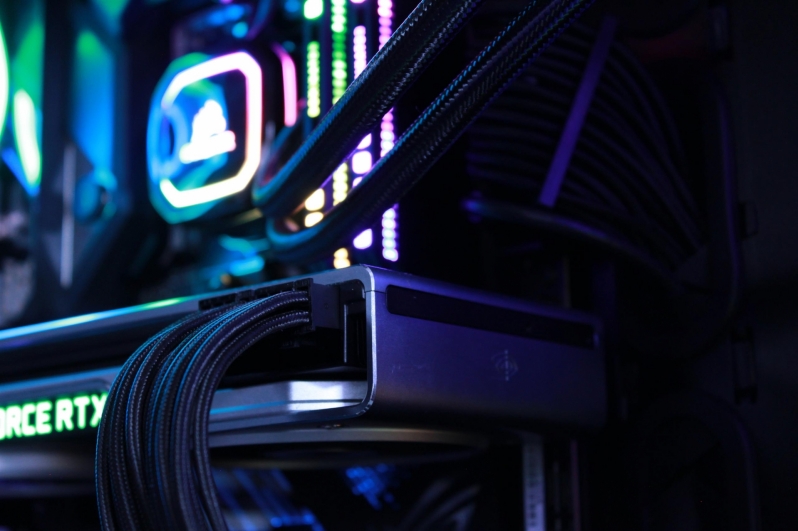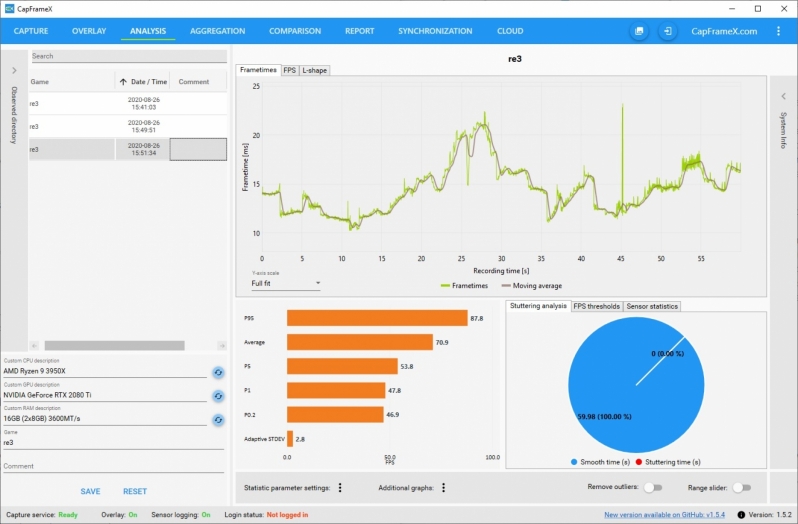Moving our GPU testing to AMD Ryzen
The Build & Software
Building our new Ryzen powered test rig was as simple as any other PC build. Corsair’s Obsidian 500D SE RGB offered us plenty of space to work with and all of our components fitted into the system with little hassle.Â
As usual, CPU and DRAM installations are simple operations, and our Corsair H150i RGB Pro XT can utilise AMD’s stock cooler mounting solution. This fact meant that we didn’t need to take apart any section of the motherboard aside from its M.2 heatsink, which must be removed to install our Corsair MP600 M.2 SSD.  Â
With the Obsidian 500D SE RGB, fan and radiator installation was a breeze thanks to the case’s removable radiator plates. These plates allowed us to handle the difficult part of AIO installation outside of the enclosure. Usually, roof-mounted radiator/liquid cooler installations feel like an operation that’s designed for people with three arms, but Corsair’s removable radiator/fan mounting plates solves that issue entirely.Â
For PSU installation, we opted for a fan-facing-up configuration, as it can sometimes be useful to see whether or not the PSU’s fan is spinning. This configuration also allows us to use Corsair’s “Fan Test” button and see immediate results within the system. This could be useful if we ever need to diagnose system faults. Â
We tried to manage our cables as well as possible when building our graphics card test system, and this is the result. While tidier builds are possible, we are happy with our work here.
What we have here is a decent balance between tidy cable runs and the ability to quickly and easily remove our power supply should we ever need to. Future graphics cards may need more PCIe 6+2 pin connectors for power, or we may need a new power connection type such as Nvidia’s new 12-pin connector.Â
Our only fault with Corsair’s Obsidian 500D is that we wished that the case’s cable routing channel offered us more volume. When using braided cables, this channel can fill up quickly, which is a problem if you use a multi-GPU setup or require more than two 6+2 PCIe power connectors. Â
What we have here is a clear system which features plenty of space for future graphics cards and a tidy aesthetic which will allow us to best showcase new products.Â
Â
Here we can see the perks of using pre-braided PSU cables, as it helps give our system a premium look and feel. Their only function over our RM1000i’s stock cables is to look nice, and they succeed in achieving that goal.Â
As previously mentioned on the PSU page of this article, Corsair Link is an important part of our GPU test system. It allows us to control all the fans within our system with ease, keeping them at constant RPMs to ensure that all GPUs are tested under the same airflow conditions.Â
Corsair Link is also a useful tool for power consumption tests, as it allows us to measure our system’s power draw, which is a useful comparison point when testing graphics cards. While this data point isn’t GPU-only power draw, this data remains useful for GPU-to-GPU comparisons.Â
CapFrameX
CapFrameX is one of the most useful benchmarking tools available today, building upon PresentMon to deliver users a reliable and repeatable capture and analysis tool that easy enough for anyone to use.
When combined with Rivatuner Statistics Server, CapFrameX also provides users with an excellent overlay, offering users framerate data, frametime data and hardware utilisation statistics. If you love in-game framerate and hardware statistics, CapFrameX is a tool that you should consider using.  Â




